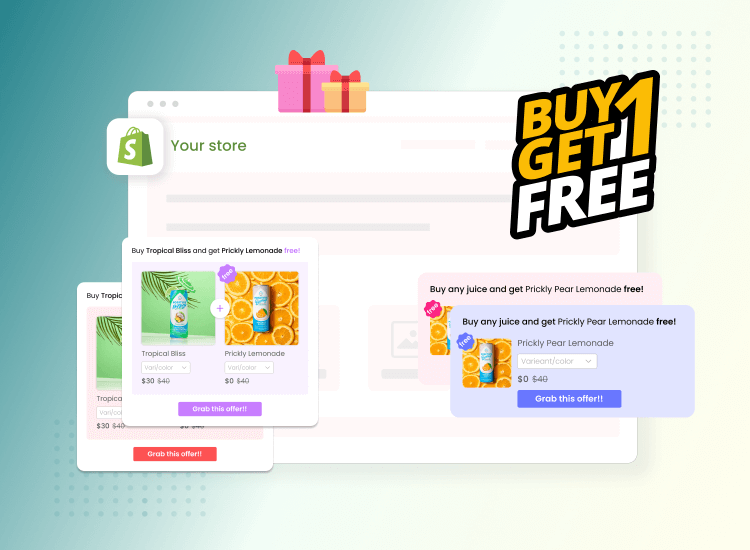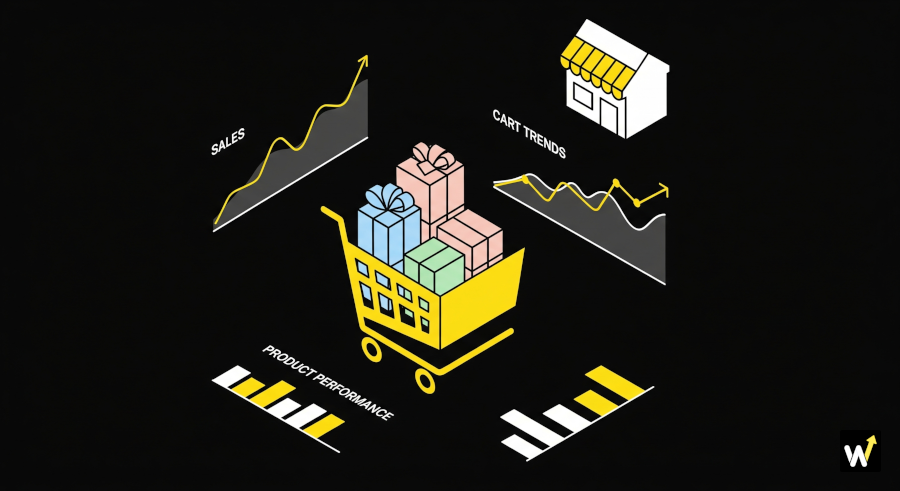Running an online store often means dealing with constant changes—new arrivals, seasonal collections, and sometimes, discontinued products. But if you’re selling bundles on Shopify, these changes can create a tricky situation. What happens when a product variant in your bundle is discontinued or deleted?
Managing product variants in Shopify can be a daunting task, especially when dealing with discontinued or deleted options. The challenge intensifies for store owners offering product bundles as any change can disrupt the entire package.
If you don’t handle it properly, bundles can break, confuse customers, or even lead to failed orders. The good news is, there are smart ways to manage this without losing sales or creating unnecessary chaos. In this post, we’ll walk you through practical steps to handle discontinued or deleted product variants in Shopify bundles while keeping your store smooth and customer-friendly.
Why Product Variant Changes Break Bundles?
Before we jump into solutions, it’s important to understand why bundles break when a variant is removed.
A Shopify bundle works by grouping multiple products or variants together and selling them as one package. Each bundle usually links directly to product variant IDs. If one of those IDs no longer exists (because the product was deleted or a variant was discontinued), the bundle can’t pull it anymore.
That leads to problems like:
- Broken bundles that don’t display properly on the storefront.
- Checkout errors when customers try to purchase bundles.
- Confused shoppers who can’t understand why part of the bundle is missing.
- Lost sales if bundles stop working altogether.
In short, one small change to your product catalog can ripple into bigger issues. That’s why having a strategy in place is crucial.
Step 1: Use Conditional Bundling Instead of Fixed Variants
One of the easiest ways to avoid broken bundles is to make bundles more flexible. Instead of locking in specific variants, use apps or tools that support conditional bundling.
For example, if you sell a “Summer Skincare Bundle” with three variants of sunscreen, you don’t want the entire bundle to disappear just because one SPF 30 variant is discontinued. Instead, you can:
- Allow the bundle to pull a replacement product (like SPF 50).
- Set conditions such as “include one sunscreen” rather than a specific SKU.
This way, even if one product is removed, the bundle remains intact.
Pro tip: Many Shopify bundle apps (like Wizio, PickyStory, or Simple Bundles) allow dynamic bundling rules that make it easier to swap products without breaking the bundle.
Step 2: Plan for Substitutions and Alternatives
Think of your bundles like restaurant menus—if one item is unavailable, you should always have a backup.
Here’s how to plan ahead:
- Map out substitutes for popular variants. For example, if you bundle “Red T-shirt, Size M” and it goes out of stock, have “Blue T-shirt, Size M” as an alternative.
- Use product families rather than single variants. Instead of bundling “Strawberry Lip Balm (15ml),” bundle “Any Lip Balm (15ml).”
- Automate substitutions with your bundle app or Shopify Flow (for Shopify Plus users).
This keeps your bundles consistent, avoids disappointed customers, and ensures that your promotions remain live.
Step 3: Avoid Deleting Variants Directly
A common mistake store owners make is deleting a product or variant outright. While it cleans up your product list, it often breaks existing bundles or past order data.
Instead, follow this approach:
- Unpublish or hide the product from your storefront rather than deleting it.
- Mark it as “out of stock” so bundles linked to it won’t display errors.
- Redirect shoppers to a replacement product using Shopify redirects.
This way, the variant technically still exists in your system, so your bundles won’t crash. You can then replace it with an alternative at your own pace.
Step 4: Monitor and Audit Bundles Regularly
Bundles are powerful sales tools, but they need upkeep—especially if you frequently update your catalog.
Here’s a simple checklist to audit your bundles:
- Monthly checks: Review bundle pages to ensure all items are in stock.
- Error alerts: Some bundle apps send notifications when a product inside a bundle is missing. Turn these on.
- Update seasonal bundles: Rotate products ahead of holidays or launches to prevent discontinued stock from slipping in.
By catching issues early, you’ll avoid the dreaded “bundle not available” message when customers are ready to buy.
Related Reading: Troubleshooting Common Shopify Bundling Apps Issues
Step 5: Communicate Clearly With Customers
Sometimes, no matter how much you prepare, a product variant may disappear. The key is to manage customer expectations.
- Update bundle descriptions to say “Products may vary slightly based on availability.”
- Offer a small perk (like free shipping or a discount code) if you need to swap a product unexpectedly.
- Be transparent—customers appreciate honesty, and most won’t mind a substitution if it’s equal or better.
By keeping communication clear, you protect customer trust and avoid refund requests.
Introducing Wizio Bundle
The Wizio Bundle: Quantity Breaks app for Shopify makes managing product variants and creating flexible bundles simple and efficient. It offers a range of powerful features, from quantity breaks and volume discounts to BOGO deals, upsells, and “Frequently Bought Together” bundles. The app also includes smart tools like a cart drawer with AI recommendations, progress bars for free shipping, gift wrap options, and shipping protection. With seamless integration for subscriptions, performance tracking, and A/B testing, Wizio helps Shopify store owners optimize their bundling strategies and boost sales without any coding required.
Real Example: A Clothing Store
Imagine you run a Shopify clothing store and sell a “Winter Essentials Bundle” with:
- 1 Woolen Scarf (Gray, Variant ID: 123)
- 1 Pair of Gloves (Black, Variant ID: 456)
- 1 Beanie (Blue, Variant ID: 789)
If the Gray Scarf variant is discontinued, your bundle breaks.
Instead of deleting it, you:
- Hide the discontinued scarf from the storefront.
- Add a conditional rule: “Include any scarf from Winter Collection.”
- Offer a choice between Gray, Red, or Beige.
Result? Your bundle continues to sell smoothly, and customers even enjoy having more options.
Also read: Why Shopify Bundles Show Sold Out?
Conclusion
Bundles are one of the best ways to increase average order value on Shopify, but they’re also fragile if not managed carefully. When discontinued or deleted product variants sneak in, bundles can break, causing lost sales and frustrated customers.
The solution is simple:
- Use conditional bundling instead of fixed variants.
- Always plan for substitutes and avoid deleting products outright.
- Audit your bundles regularly and communicate clearly with customers.
By putting these practices in place, you’ll ensure your Shopify bundles stay strong, flexible, and profitable—even as your product catalog changes.




